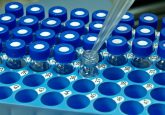New assay developed for rapid diagnosis of tuberculosis
A paper recently published in Science and Technology of Advanced Materials describes a colorimetric sensing strategy using gold nanoparticles and microfluidic paper-based analysis for the diagnosis of tuberculosis.
Researchers from various institutions in Taiwan have reported a simple method for the diagnosis of tuberculosis, which significantly reduces assay turnaround time and complexity compared with other established techniques.
The developed method detects tuberculosis DNA sequences using unmodified gold nanoparticles and a paper-based assay platform. The assay turnaround time is 1 hour, starting from the time a sample is extracted from a patient, and can detect 2.6 nM of target sequence.
Currently, the fastest alternative is a PCR-based method that takes from 2 to 5 hours, however, it requires skilled personnel and a sophisticated infrastructure, which may not be available in developing countries.
Speaking to Bioanalysis Zone, one of the authors of the study Chien-Fu Chen, from National Chung Hsing University (Taichung, Taiwan), described the initiative behind the research, “It is a great honor to contribute our research to global health issues, such as infectious diseases using low-cost miniaturized analytical devices adopting versatile bioanalysis techniques for sensitive and specific platforms.”
Chen explained the further work his team are planning, “We will attempt to translate this study from academic research to realistic applications. This will involve improving the sensitivity of the assay and the optimization of the current procedures and other detection platforms that we have developed in our research group.” Chen went on to explain, “We expect this translational medicine will provide rapid and cost-effective assays for on-site diagnostics in resource constrained settings.”
Source: Tsai TT, Shen SW, Cheng CM, Chen CF. Paper-based tuberculosis diagnostic devices with colorimetric gold nanoparticles. Sci. Technol. Adv. Mater.14 (4), (2013).






